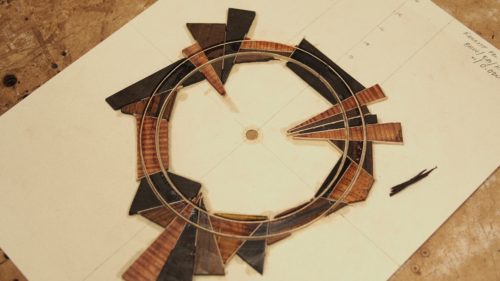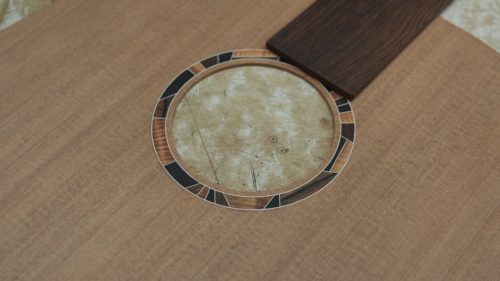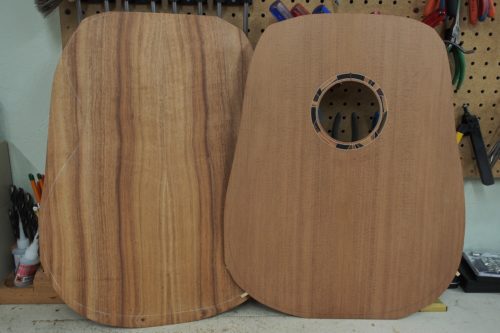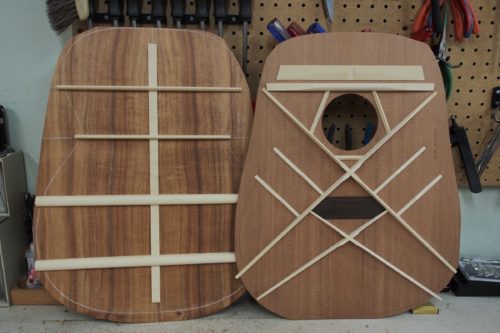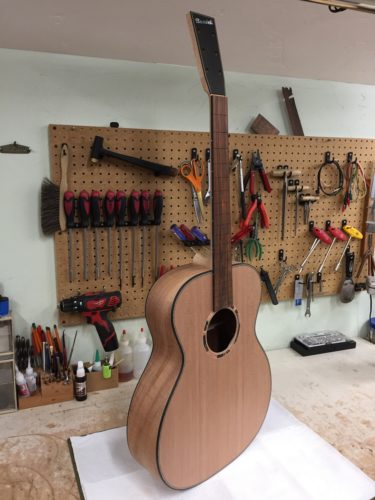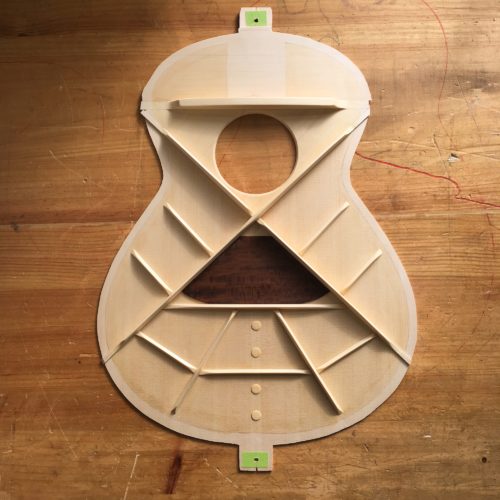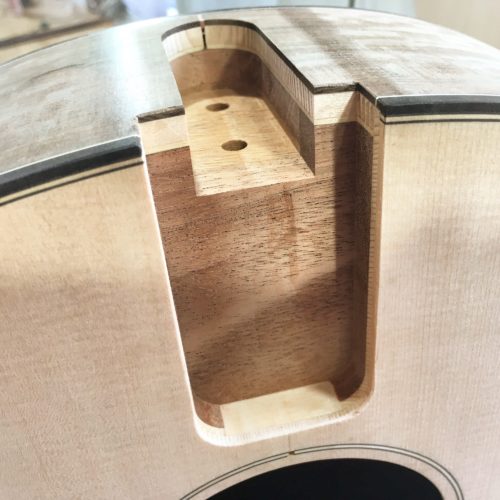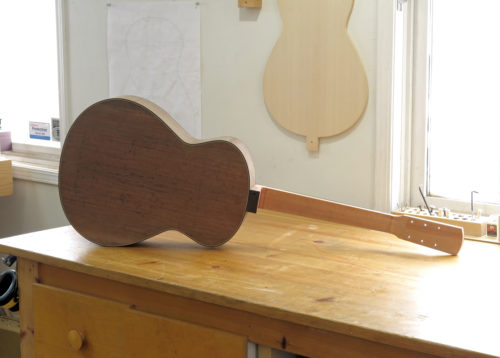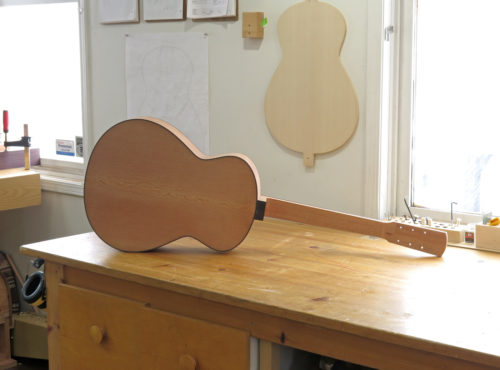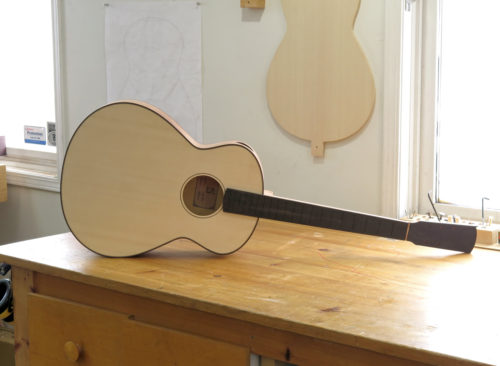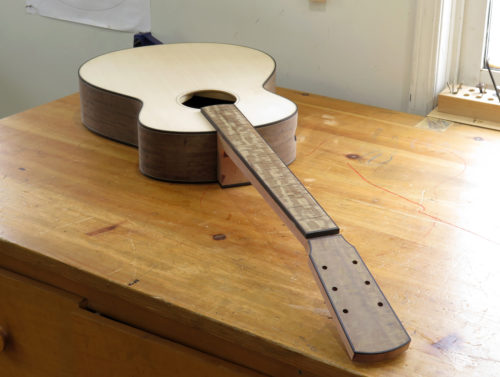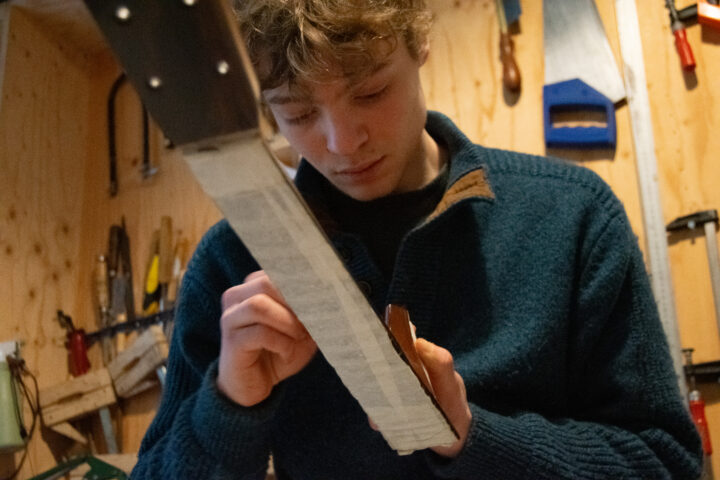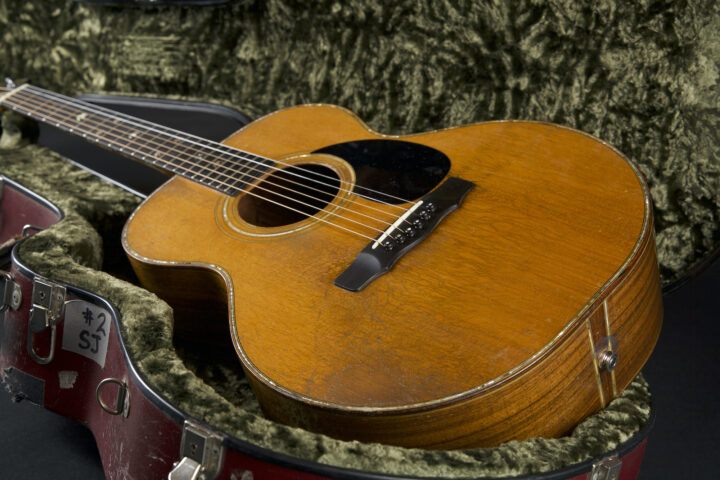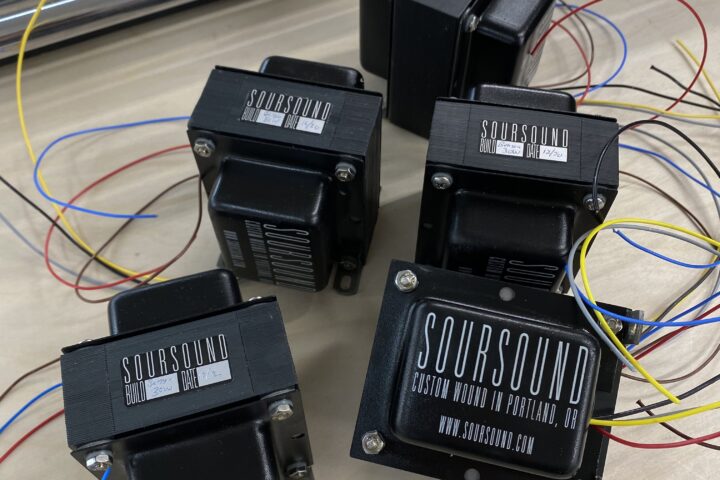We’re doing something different with the Bench Press for a stretch here. With the second annual La Conner Guitar Festival fast-approaching, we figured it would be fun to reach out to some of the luthiers we’re looking forward to seeing (again) for a preview of what they have up their sleeves for the show. Here’s our second installment in this limited series, featuring Butch Boswell and Dion James.
We asked just one question: Are you working on anything special for La Conner?
Butch Boswell, Boswell Guitars

For the La Conner Guitar Festival this May, I’ll be bringing two instruments, including a 000-14. I’m using Hawaiian koa for the back and sides, Tunnel 13 redwood for the top. The koa I’m getting lately is incredibly special. My friend (and supplier) helped to run the largest kiln operation on the main island for nearly 30 years. Every time an exceptional board came through, he’d stash it aside. So, when he moved back to Oregon, where my shop is now, he brought with him a couple of containers full of wood (yes, you read that right). Every now and then, he brings in a board that we look over together, and I’ll re-saw it into instrument veneers (he builds as well). It’s literally one of my favorite things to do, and he pays me for my time with a set or two of this amazing material. These koa boards have been air dried for 20-30 years, some even longer, and the grain is spectacular.
As for the Tunnel 13 story, I think most of us have heard it by now (if not, look up the Tunnel 13 train robbery). But briefly, this redwood came from the beams that lined the train tunnels running through the Siskiyou mountains between California and Oregon, built in the late 1800s. These beams were first growth redwood, alive when the Romans ruled the world, and the grain and stiffness verifies that. The guitar is braced with German spruce, and uses my forward-shifted, interlocking double X top bracing pattern. It’s trimmed out with African ebony for the most part, aside from a very special, perfectly quartered Brazilian rosewood fingerboard. The rosette is my “tiled mosaic” design, using repeating but randomly sized pieces of ebony, koa and Brazilian rosewood and framed together with maple strips. The scale length is 24.9”, the neck-to-body joint is a dovetail, and the construction is all hide glue.
Dion James, Dion Guitars
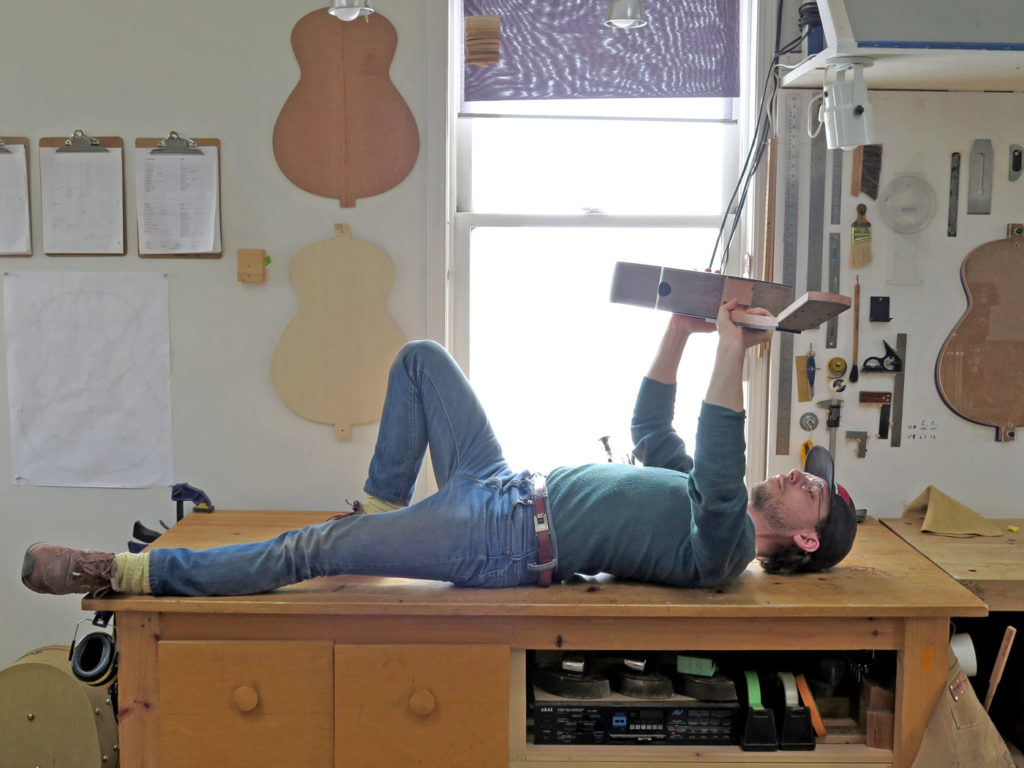
I’ve got four guitars on my bench at the moment, two of which are destined for the La Conner Guitar Festival. I exhibited at the inaugural La Conner show in 2017 and had an absolute blast. Shirley, Brent, and all of the volunteers made it the most enjoyable experience. Seemingly every detail was covered, the food in the builder’s room was great, and the venue was packed both with talented builders and potential clients.
I tend to employ a very minimalist aesthetic sense to my builds and my La Conner offerings will be no exception
For the first guitar I’m using Lutz spruce for the top, a mahogany neck, ebony fingerboard and bridge and a beautiful set of Lacewood for the back and sides. This being the first time I’ve built with Lacewood I got to experience the challenges, well documented by other builders, associated with this persnickety wood. I do believe the beauty will have been worth the trouble.
The second guitar I’ll be bringing with me will have a Lutz soundboard, mahogany neck and an ebony bridge. My last four or five guitars have all had ebonized necks with fingerboards and head veneers matching the material used for the back and sides and bound in ebony, giving them the appearance of being set into the black void of the neck. With this guitar I will continue on with that design theme. In this case the wood being used is highly figured Lapacho, a very hard wood, difficult to work with edge tools, but with a beautiful tap tone and striking appearance. The Lapacho used for this guitar was harvested from an area flooded during the making of the Panama Canal and harvested by scuba divers wielding vegetable oil powered chainsaws!
These guitars, like all of my builds will boast a fairly uncommon collection of structural elements, designed in my shop or gleaned from friendly fellow builders and modified to fit my needs including:
- Shop-made carbon fiber U-rods in the necks
- Structured sides
- Hollow core backs
- Full bolted neck joint
- Cross-reinforced sound hole and neck joint area of the soundboard
- Symmetrical soundboard bracing
- Stainless steel, double action truss rods made by Mark Blanchard
All of these elements are used in concert to reinforce areas that are purely structural and/or have proven to to be weak points in vintage instruments, allowing the lightening of the structure in the areas responsible for the movement of air and thus the production of sound, making for stable and very responsive instruments.
